E-bikes for Daily Transportation?
How many of our households have a dedicated gas-powered vehicle for each driver? What if our new normal became one car per household and an electric bike for each “driver?” Using e-bikes for commuting and errands could save money by reducing expenses for gasoline, car insurance and car maintenance. The environment would certainly benefit from fewer cars on the road and pollution in the air.
But what is an e-bike? Is it a bicycle? A scooter? A moped? A motorcycle? Do e-bike riders need a license? Can these motorized bicycles be ridden on bike paths? Can owning one transform your local transportation options? Can a person get a good workout using an e-bike? This blog will answer all of these questions and dive into some of the options available when purchasing one, including how to look for state and federal rebate programs to make them more affordable.
E-bike 101
Electric bicycles, commonly called e-bikes, are actually considered bicycles. Although some may look like a scooter, e-bikes are not scooters, mopeds or motorcycles. Electric bicycles have moving pedals whereas scooters, mopeds and motorcycles do not. In a nutshell, e-bikes can enhance your pedaling power when the electric component is activated. There are different types, styles and classes of e-bikes, but all of them use an electric motor which is powered by a battery to help you move easier and/or faster when in use. Some have a throttle so pedaling can be bypassed, if needed.
A special riding license is not required for using an e-bike. Some states have minimum age restrictions for Class 3 e-bikes (see graphic for information about Class 1, 2 and 3 e-bikes). In addition, some states restrict the use of Class 3 bikes on bike paths. There is a link at end of blog for e-bike laws by state, but it is also recommended to check your local county and city regulations.
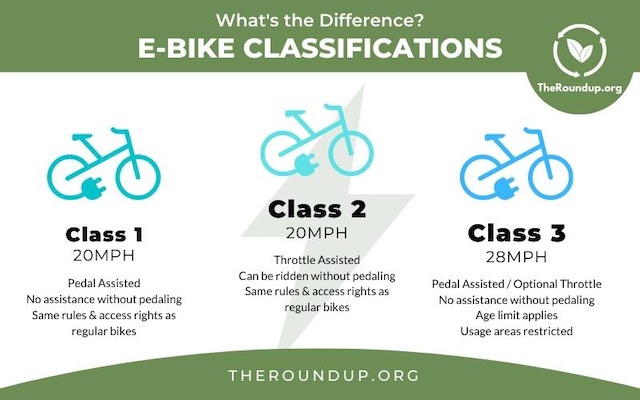
Why use an e-bike?

I have been riding a bike of some sort since I was two years old. As a teenager and young adult, the public bus and my 10-speed Schwinn were my main modes of transportation. My Schwinn was stolen in my early twenties and having kids shortly afterwards, getting a replacement was not a priority. Ten years later, I borrowed a friend’s road bike for a social ride and I was hooked again. My parents, especially my dad, were active in a local cycling club. Eventually I started doing more bike rides on my own, with my parents and with the club.
There is something so freeing about being on a bike. My prior blog was about activating all five senses in a xeriscape garden. When I am riding my bike, it is also to activate my senses: the aromas from rosemary, society garlic, roses, lilacs; the wind on my face and through my hair; the sounds of birds; admiring landscapes; tasting refreshing water; even sweat dripping down my back. All of these create a sense of connection to life and earth when I am riding.
In San Jose, I did 20-30 mile rides regularly. I also some longer century rides. I’ve never been a fan of climbing hills, but would do it whenever it couldn’t be avoided. Fast forward to life near Denver. There are hills everywhere! It isn’t easy for me to hop on my bike and ride 2 miles to Whole Foods because there is a significant hill between me and them. There are so many beautiful bike paths in my area, but 90% of them have hills. I have some Denver area friends that ride hills without trouble (yes Judy and Marla, I’m talking about you). I wish I was one of them.
The reason for writing this blog on e-bikes is I have decided that I want to ride a bike several times a week. If I need to go to the post office (5 miles round trip), my doctor office (9 miles RT), grocery store (4 miles), grandson’s soccer game (30 miles RT), to mom’s house (20 miles RT), I want to get on my bike and ride. Having a bike with pedal assist (more on this later) will make this possible!
Some critics say that riders aren’t getting a “real” workout when they ride an e-bike. If a rider used the throttle (Class 2 and 3 bikes have throttles) the whole time and didn’t pedal, that might be the case. However, most times riders are pedaling and the electric component is amplifying their pedal power. A rider can choose to use the battery assist or to pedal entirely on their own power at any time. A rider might choose to ride farther with battery assist and therefore could be getting more of a workout.
The real perk in my mind is that people would be driving cars less, which means less harm to the environment and potentially saving lots of money due to fewer expenses related to car ownership. Anyone with solar panels would be charging their bike with green energy.
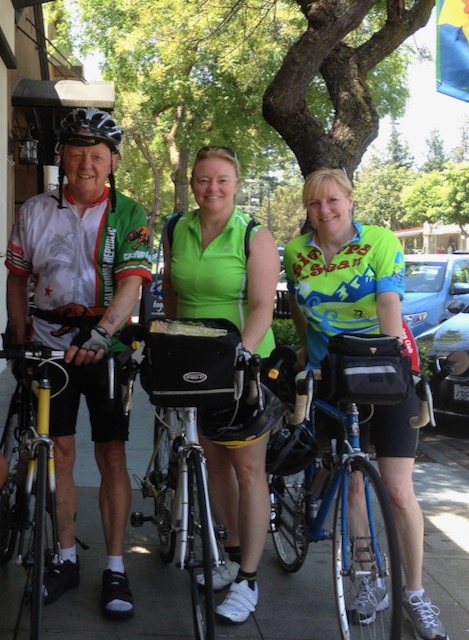
Types of e-bikes to choose from
There are many choices when thinking about what type of bike fits you and your lifestyle. Most brands have the main three types: road (narrow tires), mountain (fatter tires and shock absorbers) and hybrid (medium width tires). But many brands also include commuter bikes, cargo bikes, gravel bikes folding bikes and trikes.
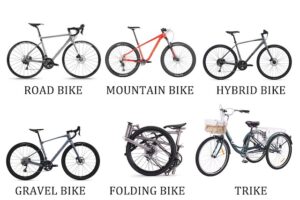
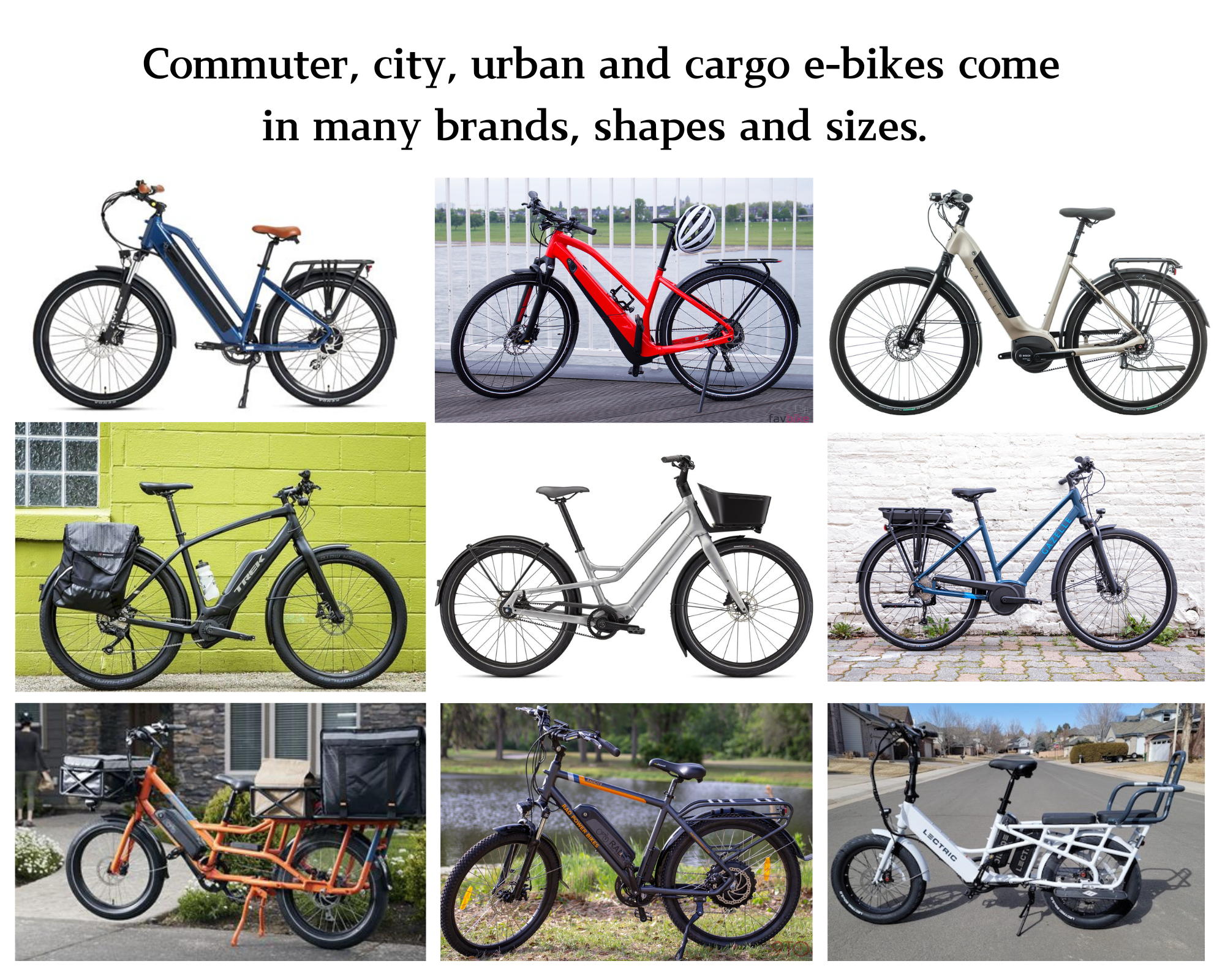
Important considerations
Ease of getting onto the bike
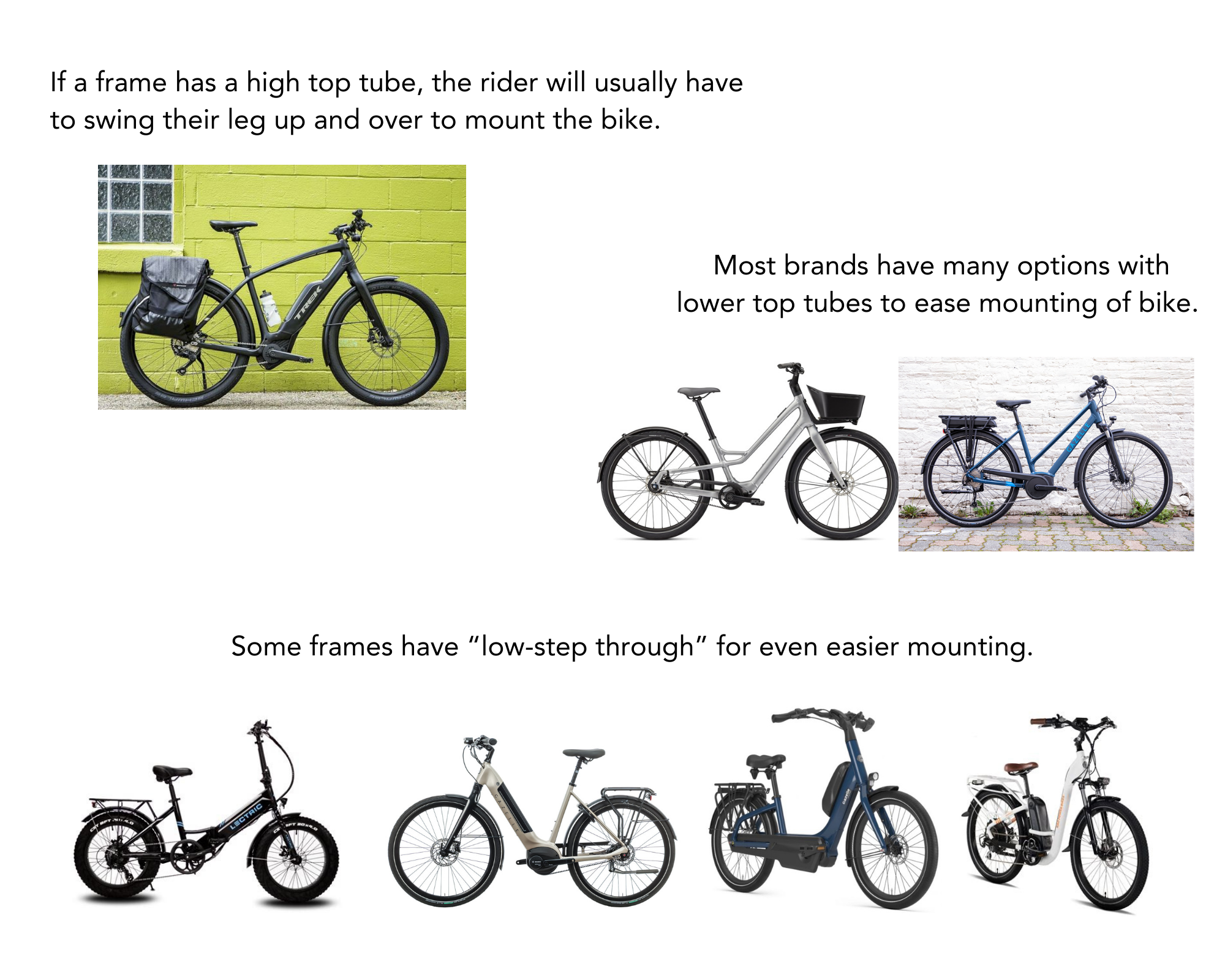
The battery

The range of battery
With cars, there are many factors that affect gas mileage efficiency. The same is true for the range of an e-bike battery. Most e-bikes have 4 levels of assistance. They are “eco,” “tour,” “sport,” and “turbo.” The battery will last much longer if the rider uses eco assist or no assist. A rider using turbo the entire ride will have a significantly shorter range.
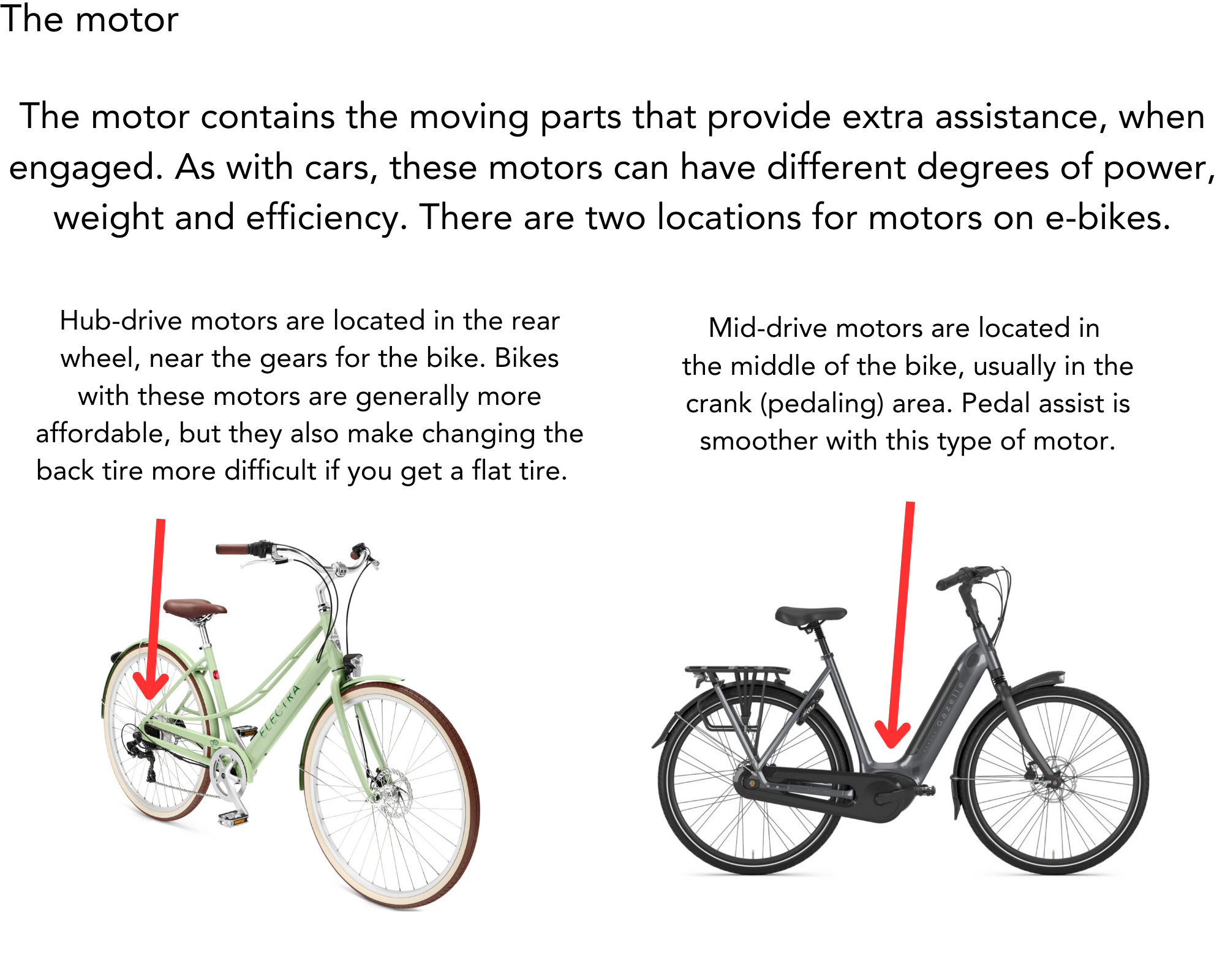
State and Federal Rebates
In order to qualify for a tax credit, the bike must have a motor capable of at least 750 watts; must have pedals and the ability to carry one person and must be a Class 1, 2 or 3 bike.
E-Bike Incentive Programs (select your state)
Final Thoughts
As I test out bikes while contemplating an e-bike purchase, these are some questions I am asking:
- What is the range for a full charge when riding in eco mode?
- How much time does it take to charge the battery from a regular outlet?
- What is the bicycle’s weight?
- Is there a display to show speed and mileage?
- Is the frame carbon or aluminum? (I am looking for a carbon frame.) [Note: Most utility e-bikes have a heavier steel frame.]
- Are there any plastic components? If so, which ones?
- Is there a crash replacement policy?
- What kind of warranties does the bike and its components have?
- What kind of rack will I need for my car if I want to transport the bike?
Purchasing an e-bike can be a big and expensive decision, especially if looking at the brands with quality components and longer warranties. I hope the information above helps clarify some of the issues so that you can make a more informed purchase. If you need/want more information, this site has lots to share.
I highly recommend purchasing a bike helmet, lights for front and rear, lock, bell, fenders and rack to hold a basket or bag. All of these accessories will make for a safer, more enjoyable and freeing ride when running errands or getting out on the road or trail. Happy riding!
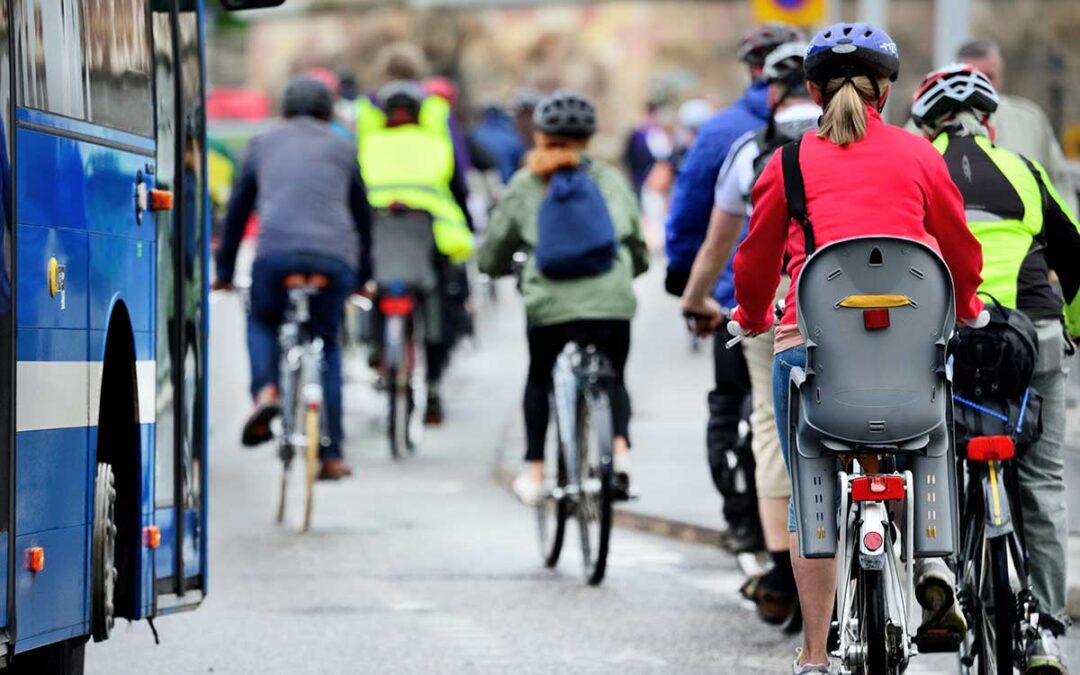
Thank you, Barbara. This is a great primer. I’ve been thinking about getting (or renting to start) an ebike for some time. I’d go more places with the assist.
Even though I am not a bike rider, I appreciate your thorough and interesting blog. Thank you for your work in protecting our environment. I love the photos too!